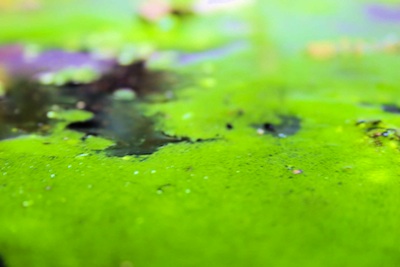
From slime to dollar signs?
February 4, 2013
By Stefanie Wallace
 February 4, 2013, Aurora, ON - Strains of algae – the slimy, often-deemed problematic substance found in pools, ponds, and your own backyard – are being recognized for their potential as advanced biofuel, and a solution to climate change troubles. But where do the real opportunities lie?
February 4, 2013, Aurora, ON - Strains of algae – the slimy, often-deemed problematic substance found in pools, ponds, and your own backyard – are being recognized for their potential as advanced biofuel, and a solution to climate change troubles. But where do the real opportunities lie?
Algae can be cultured in open ponds and photobioreactors. Water, carbon dioxide, minerals and light are all necessary for cultivation, and different types of algae have different growth requirements. Once grown, algae oils can be extracted and converted into biodiesel, or converted in a refinery to what Dr. David Levin at BioFuelNet calls drop-in oil to replace petroleum-based fuels. After the oil is extracted, the residual algae can be turned into several other things, like fertilizer or biochar. But with light and temperature two major factors in growing algae, Canada’s northern climate isn’t ideal.

|
|
| Algae can be cultured in open ponds and photobioreactors. |
Most algae companies in Canada are currently focusing on carbon capture-based projects, hooking photobioreactors up to industrial emitters of carbon dioxide and growing algae. The process almost sounds too good to be true: while reducing their greenhouse gas emissions, companies can become more sustainable and potentially make money from their pollution. But Levin is skeptical of market opportunities: “There’s merit in the process . . . but everything depends on the price of oil and gas.”
Climate and market aren’t the only roadblocks in the way of algae’s biofuel potential, and other prospects do exist. We’ll explore current Canadian activity and more challenges and opportunities in the March-April edition of Canadian Biomass. Stay tuned.
Print this page